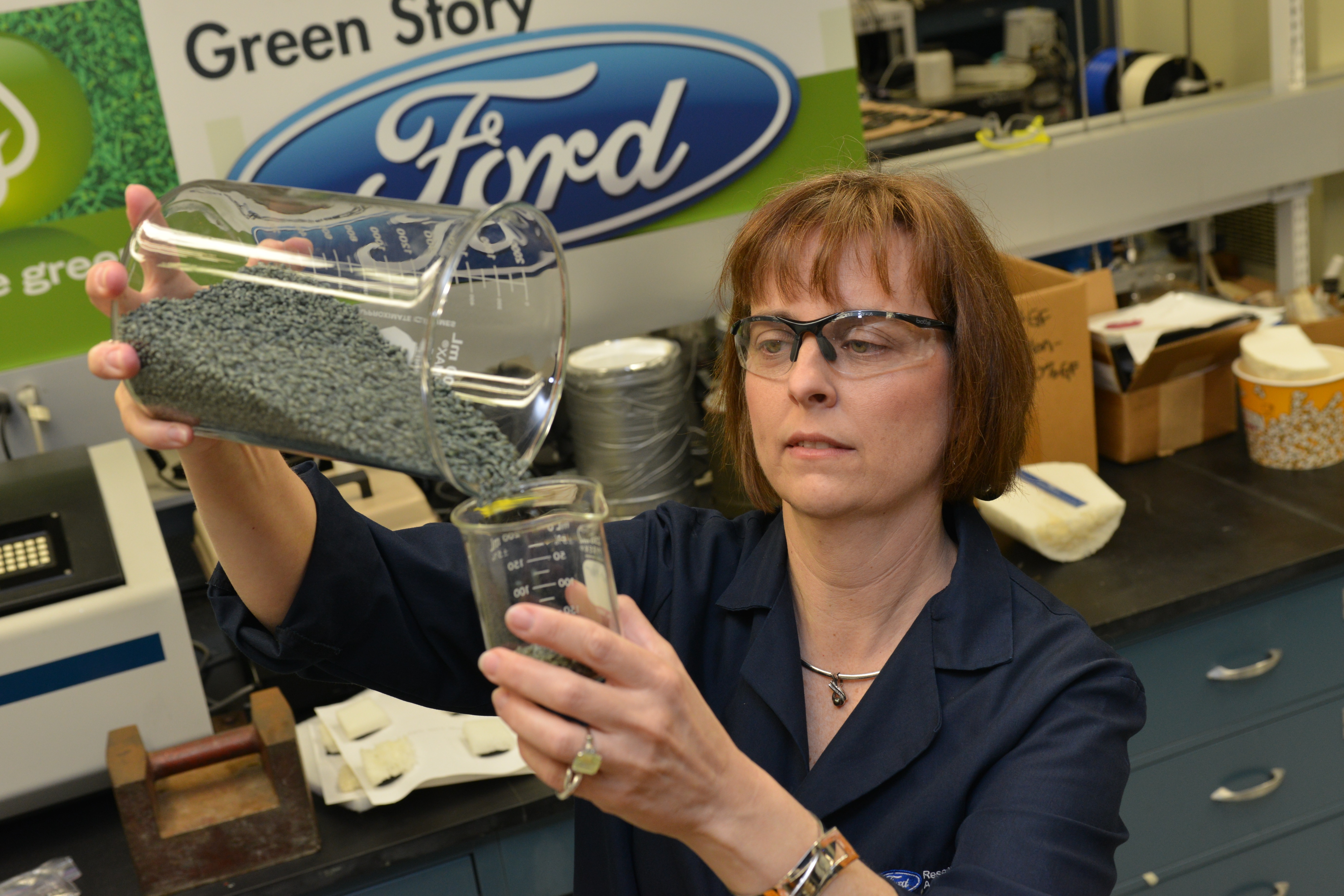As a building material, bamboo is pretty amazing. Even though it’s technically a grass, bamboo’s reeds can be tougher than timber. It also grows fast, helping make it more sustainable than lumber.
None of this is a secret to environmentally conscious consumers who have welcomed bamboo into their homes as desks, flooring and cutting boards, to name just a few applications. Still, as ubiquitous as bamboo is, people might be surprised to find it in their cars, which could be a reality in the not-too-distant future.
That’s the future that researchers at Michigan State University and collaborators in the automotive industry — especially at Ford Motor Co. — are working to create. Not just with bamboo, but an array of other plant materials to help cut costs and carbon emissions while making cars and trucks.
And where else would you see this charge but in Michigan? With its legendary automotive history and forward-looking auto shows, the state provides fertile grounds for this story. It’s a story rooted in the past, in innovators who have always valued teamwork and resourcefulness. But it’s also about the future, about ongoing partnerships and the next generation of Spartans, for whom “Go Green!” is more than a cheer. It’s a way of life.
The grass is always greener
Lawrence Drzal, a University Distinguished Professor in the College of Engineering’s Chemical Engineering and Materials Science Department, has been working to reduce the cost of composites used in cars for decades. Of course, he didn’t want to trade off on their performance either, meaning he needed materials that were both strong, tough and abundant.
“What was kind of ignored and was an area that had potential was plant fibers,” Drzal says. Wood was an obvious first choice for its strength, but trees take years to grow and harvest. And, after all, time is money, so he shifted his attention to grasses, including bamboo.
“Grasses can grow to maturity in about three to four months, they’re perennial, and their stems have very good properties,” Drzal says. “Plus they’re biodegradable and can be recycled. There are a whole lot of benefits.”
As it turned out, though, Drzal, like many innovators, was ahead of his time.
“We did a lot of work in our group with these fibers in the early 2000s, but the one thing that was lacking was a technological pull,” he says. “We would investigate these materials, show they had good properties, but typically didn’t offer any savings. They were a nice curiosity, but they weren’t used very much.”
To understand what Drzal means about savings and technological pull, it’s important to understand the existing composites his new materials were competing against.
Drzal and his team were particularly interested in making what’s called sheet molding compound. “It’s got the consistency of cookie dough,” Drzal says. “You pop it into a mold and then cure it, then you get a car hood or whatever you were making.”
The compound is a composite, or mixture. One component of the composite is a polymer that can easily be shaped or molded before it’s hardened or cured. Mixed in with that resin are fibers, the other component of the composite. The fibers boost the strength and stiffness of the moldable resin, resulting in a cured composite much tougher than the cured resin alone.
For sheet molding compound, carbon fibers have the best properties. They also come with a steep price tag. Glass fibers, meanwhile, provide good strength at a more economical cost. As a result, glass fibers have established themselves as the most widely used material and, thus, the benchmark against which Drzal would compare his new composites using plant fibers.
That comparison always favored the incumbent glass materials at first, but the criteria used to compare materials have evolved since then.



